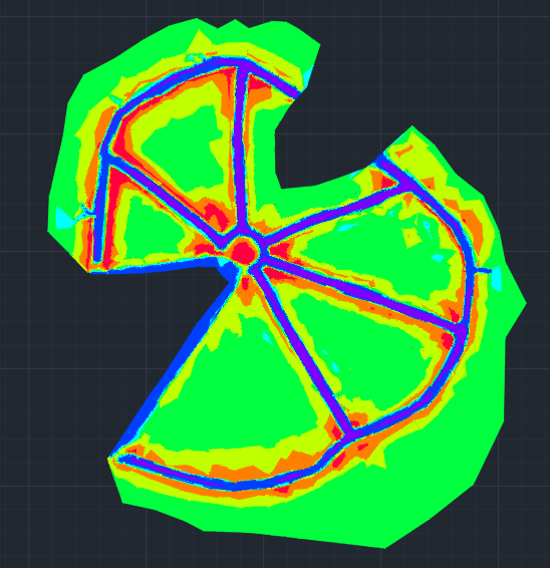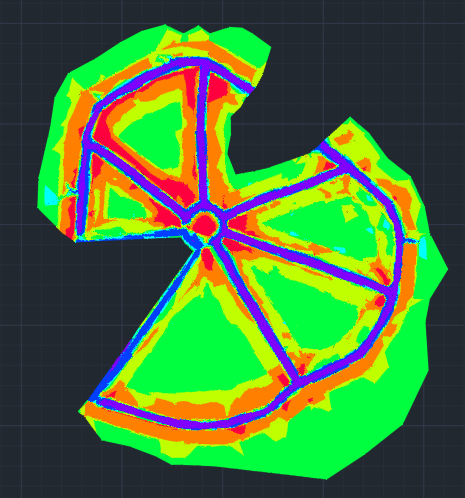Design Alternatives
Both of the restoration alternatives will follow the same initial steps. The top 6 inches of soil will be pushed back and stockpiled to the side.Then the side cast soil, piled on the edges of the trench, will be pushed back into the bottom of the trench. This process can be seen in the beow sketches of the process.
Top 6 inches of soil removed 35 feet back from the begining of the trench for alternative 1 and 45 feet back for alternative 2.

Side Cast Material Pushed into the bottom of the trench. This was done to utilize local soil, in an effort to keep costs down.

The below image was developed using the same cross section from auto cad for 4 different scenrios. The first was the exisitng trench, the second is the estimated pre-disturbed grade, the third is what the cross section will look like under alternative 1 and the fourth is cross section used for alternative 2. The gray line in each picture is used as a reference elevation of 7460 feet.
Alternative 1
The unique design factor about alternative 1 is the transformation of the current trench from a narrow deep trench to a wider and shallower trench. The exisint trench is anywhere from 5-6 feet deep and roughly 30 feet wide, alternative 1 will turn this into a 1 foot deep trench about 100 feet wide. A sketch of the design can be seen below.

Using the developed topographic map, we were able to develope a cut and fill analysis to indicate how much soil would need to be moved to complete this design. The below image is that cut and fill analysis from civil 3-D. The cut and fill analysis exluded the areas in the top left corner, Allan Lake Tank and the bottom left corner the test restoration plot due to their hydralic conductivities being already restored.


Based on the results from Civil 3-D, shown in the table below, the cost to complete the restoration was completed.
The difference in price for the cut and fill of the clay & the top soil removal and redistriubtion comes from the fact that the top soil will be moved twice. Once at the begining to clear it off, and again at the very end to cover up the restored sections to allow plant growth.
The advantages of choosing alternative 1 include; Lower overall cost, and quicker construction time.
Alternative 2
The defining feature of alternative 2 is the presence of a 3/4 foot cap on the top of the exisitng trench. Both alternative 1 and two will have a constant parabolic shape, however alternative two will turn the area of the existing trench into the highest point. To do this the top soil will be taken off 45 feet from the lip of the trench on either side. This is to account for the settling of the soil over time, to help insulate the clay from freeze thaw cycles, and protect the clay from the distruption of large mammals such as bovine and elk. A sketch of design alternative 2 can be seen below.
Utlizing the same topographic map developed from the GIS points, the group was able to create a cut and fill analysis for alternative 2 using Civil 3-D. This was done to esitmate the volumes of dirt to be moved, as well as for the cost estimate. The developed cut and fill map can be seen below.


Using the above developed cut and fill, the below cost esitimate table to complete the construction was developed.
The difference in price for the cut and fill of the clay & the top soil removal and redistriubtion comes from the fact that the top soil will be moved twice. Once at the begining to clear it off, and again at the very end to cover up the restored sections to allow plant growth.
The advanatges of alternative 2 include; a more complete restoration, a protective layer over the existing trench, protection againts freeze thaw and large mammals.